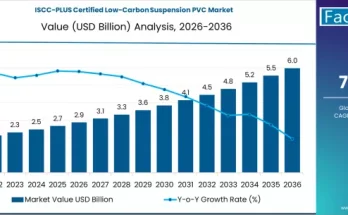Emerging Trends Shaping the Future of the Cement Industry
The cement industry is a key player in infrastructure development, job creation, and economic growth. It provides the primary building material for various projects, supports sustainable construction practices, and contributes to the resilience of infrastructure. Additionally, the industry fosters innovation, meets the housing needs of growing urban areas, and drives technological advancements to improve efficiency and sustainability.
Portland Cement is a type of hydraulic cement that is widely used in construction. It is made by heating limestone, clay, and other materials at high temperatures and then grinding them into a fine powder. The resulting cement, when mixed with water, forms a paste that hardens and binds together aggregates, such as sand and gravel, to create concrete.
The importance of Portland Cement lies in its role as a fundamental building material. It is the primary ingredient in concrete, which is used in various construction projects, including buildings, bridges, roads, and infrastructure. Its ability to harden and provide structural strength makes it a vital component in the construction industry.
The demand for Portland Cement is driven by the growth of the construction sector. As urbanization and infrastructure development continue to expand globally, the need for cement and concrete increases. Additionally, the ongoing trend towards sustainable construction practices, such as using eco-friendly cement alternatives, has also created opportunities for innovation and growth in the cement industry.
The future business scope for Portland Cement is promising. With the increasing focus on sustainable and resilient infrastructure, there is a growing demand for greener and more efficient cement production processes. Developing and adopting technologies that reduce carbon emissions, increase energy efficiency, and utilize alternative raw materials are key areas of future growth in the cement industry. Additionally, the rising demand for affordable housing and infrastructure in emerging economies presents opportunities for market expansion.
Portland Cement Industry Trends
As per data provided by Fact.MR’s report, the global demand for Portland Cement is predicted to rise at a CAGR of 4.7% and reach a market size of US$ 6.92 billion by 2033. The report further states that the use of Portland Cement in the commercial sector is predicted to increase at a CAGR of 5.5%.
Latest in Industry: Now the cement production will be carbon negative since the by-product will be able to take. Startup Brimstone will be the first in the industry certification, as reported by the Washington post.

What Factors Drive Demand for Portland Cement?
Several factors driving the demand for Portland Cement include:
1. Construction and Infrastructure Development: The primary driver of demand for Portland Cement is the growth of the construction and infrastructure sectors. As urbanization continues and populations increase, there is a rising need for residential, commercial, and institutional buildings, as well as transportation infrastructure like roads, bridges, and airports.
2. Population Growth and Urbanization: The increasing global population, particularly in developing countries, leads to a higher demand for housing and infrastructure. Urbanization, with more people moving to cities, further drives the need for construction projects, boosting the demand for cement.
3. Economic Growth: Economic growth and development contribute to increased construction activity. As economies expand, there is a greater investment in infrastructure projects, such as industrial facilities, power plants, and transportation networks, which require significant amounts of cement.
4. Renovation and Maintenance: The renovation and maintenance of existing structures also drive demand for cement. Over time, buildings and infrastructure require repairs, renovations, and upgrades, creating a continuous demand for cement in the construction industry.
5. Government Initiatives and Policies: Government initiatives aimed at promoting infrastructure development, affordable housing, and sustainable construction practices can significantly impact the demand for Portland Cement. Infrastructure investment programs and policies that mandate the use of cement in construction projects can drive demand.
6. Global Construction Trends: Emerging construction trends, such as green building practices and sustainable construction, also influence the demand for cement. As more emphasis is placed on environmentally friendly and energy-efficient construction, the use of cement in eco-friendly building materials and techniques may increase.
Also Read: Small Wind Systems: Empowering Businesses to Embrace Renewable Energy for a Brighter Future
How’s Portland Cement Different from Other Types?
Portland Cement is different from other types of cement primarily due to its specific composition and manufacturing process. It is made from a mixture of limestone, clay, and other materials that are finely ground and then heated in a kiln at high temperatures. This process, known as clinkerization, produces the characteristic clinker nodules that are then ground into a fine powder to make Portland cement.

The key distinguishing factor of Portland Cement is its ability to harden and set when mixed with water, forming strong and durable concrete. This property is attributed to the presence of calcium silicates and aluminates in the cement, which undergoes hydration reactions to create a network of interlocking crystals. This unique chemical reaction gives Portland Cement its exceptional strength and binding properties, making it the most commonly used type of cement in construction applications worldwide.
Conclusion
The demand for Portland Cement is closely tied to construction activity, economic growth, population growth, urbanization, government policies, and global construction trends. Understanding these factors is crucial for cement manufacturers and industry stakeholders to anticipate and meet the demand effectively.



